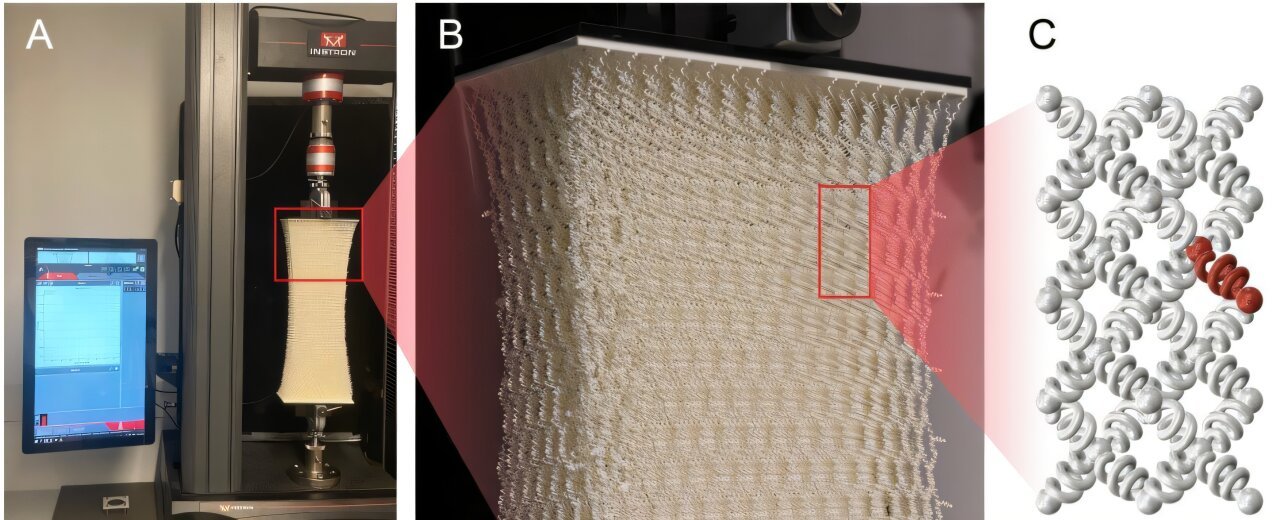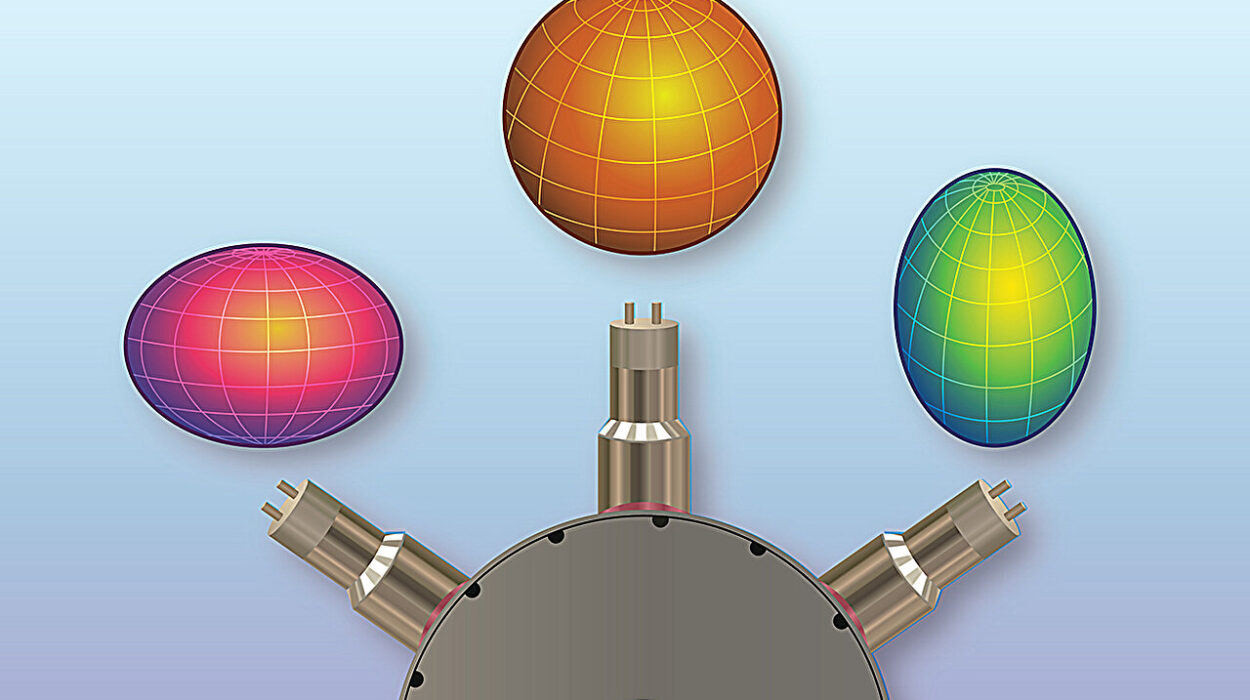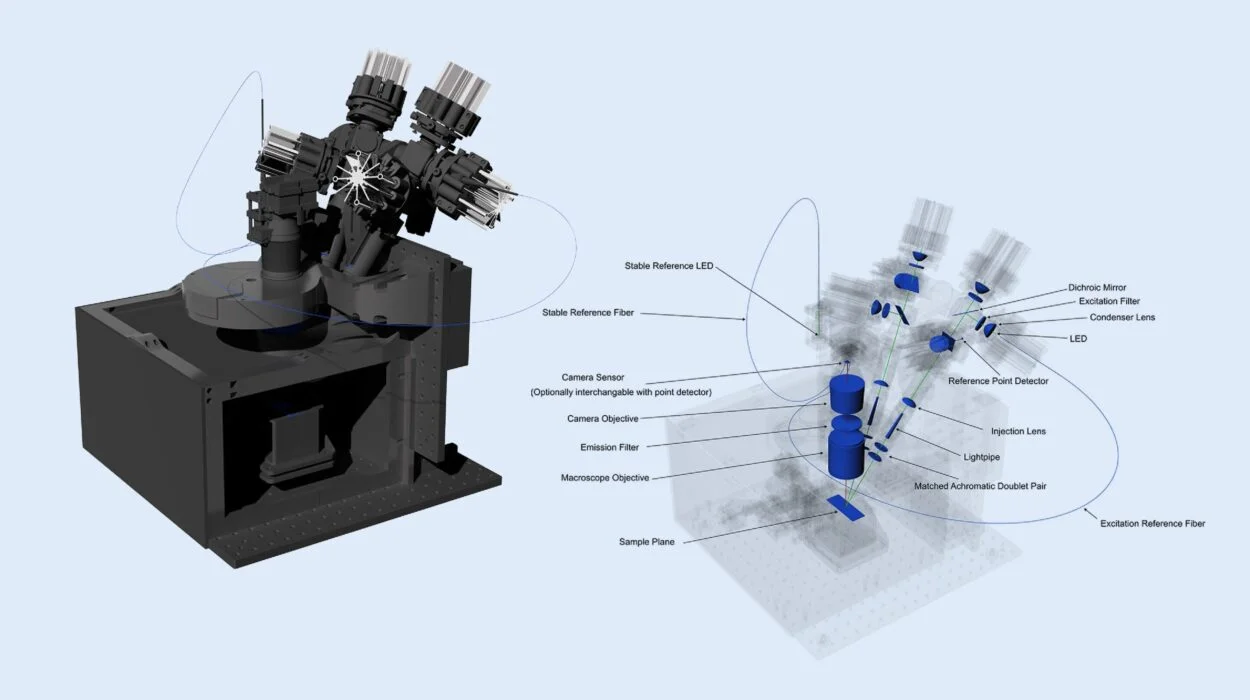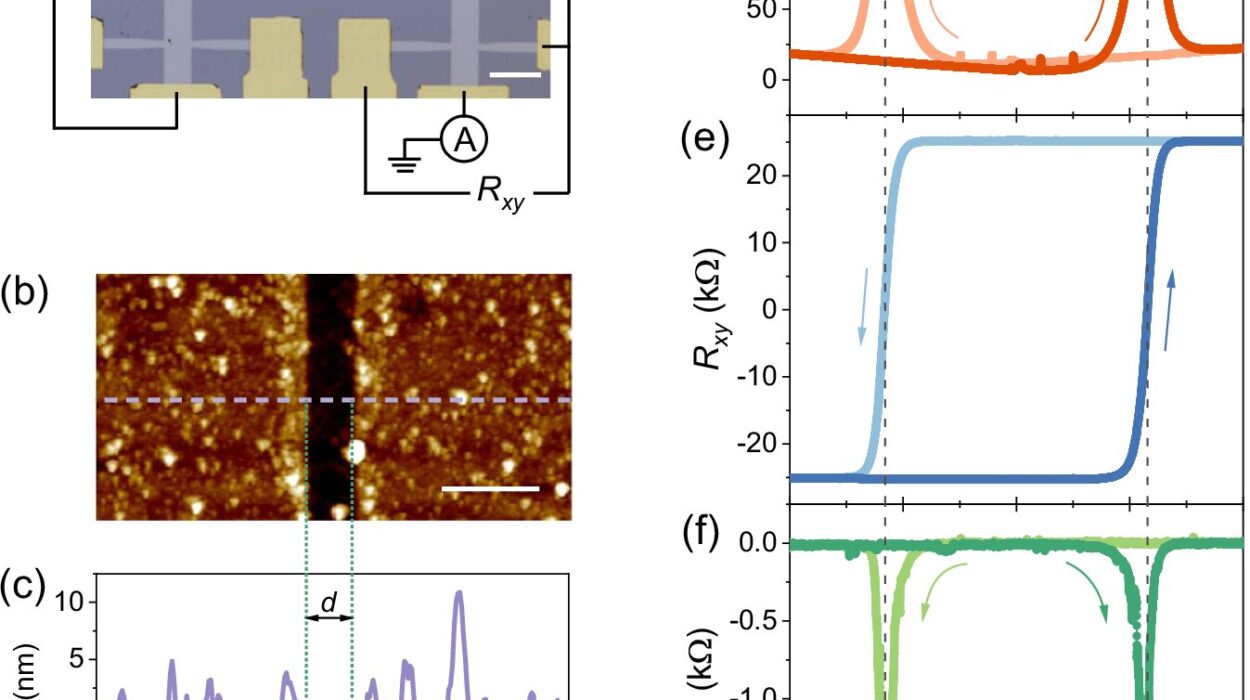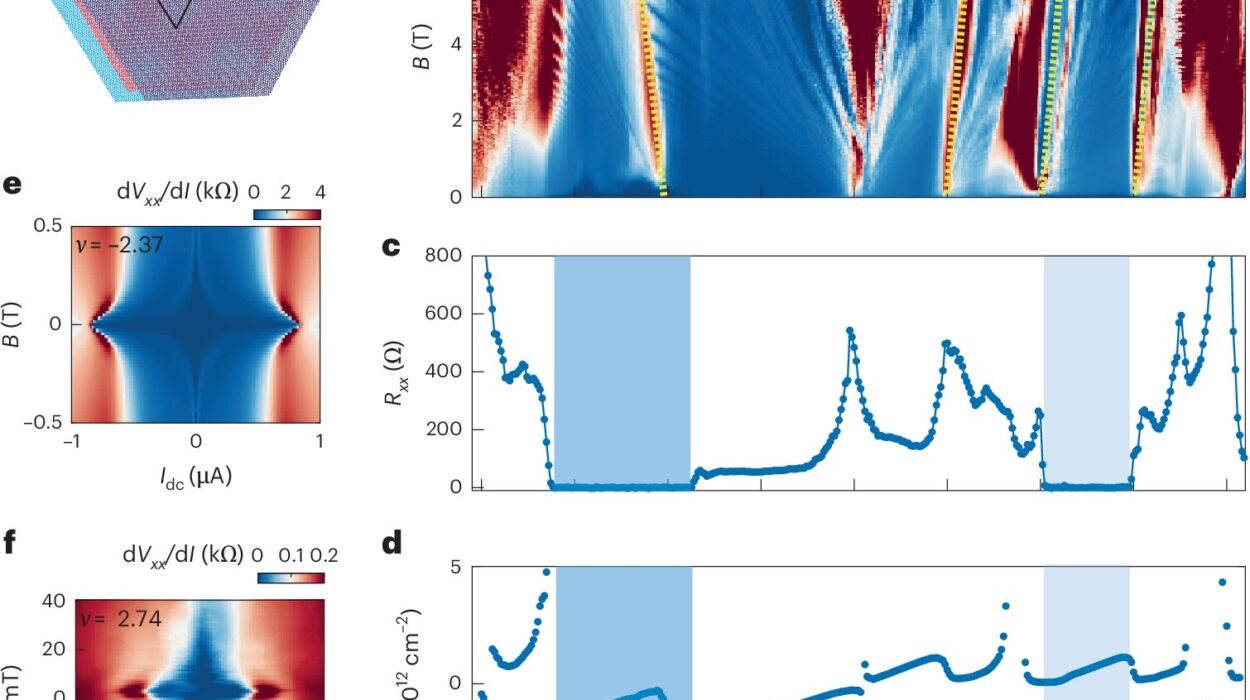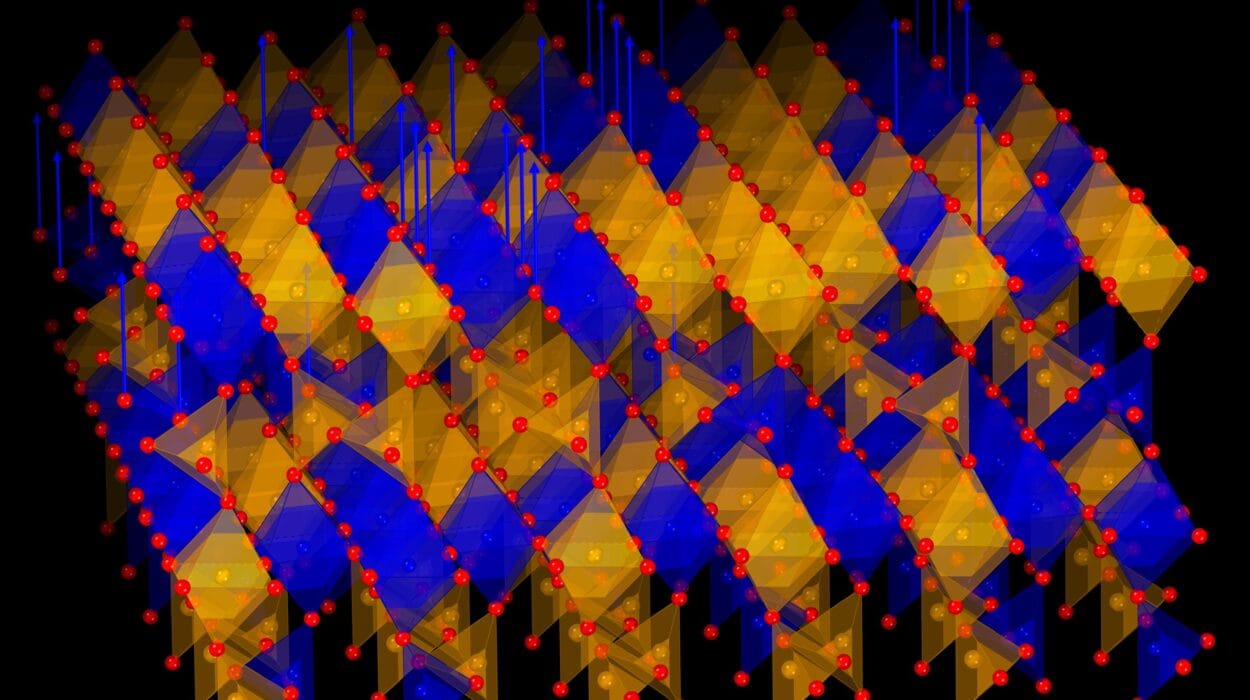From the flexible resilience of a car tire gripping the road to the intricate webbing of a spider’s silk, networked materials are everywhere in our world. These materials—ranging from woven fabrics to human tissues—owe their remarkable properties to the intricate architectures hidden beneath their surfaces. Yet for engineers designing everything from protective gear to soft robotic limbs, a stubborn question has long remained unanswered: What exactly makes these networks strong, and how can we predict when they’ll break?
Now, after decades of curiosity and incremental progress, a team of scientists from the United States has developed a groundbreaking scaling law that can accurately predict the intrinsic fracture energy (IFE) of these materials. Their findings, published in Physical Review X, offer a universal framework for understanding the durability of everything from microscopic polymer gels to large-scale aerospace structures.
This new understanding doesn’t just explain why certain materials are stronger than others—it opens the door to designing materials that are tougher, more resilient, and custom-built for their purpose.
What Makes a Network Strong?
At the heart of any networked material—whether it’s chain mail armor, rubber, or engineered tissue—is a delicate balance between flexibility and strength. A network’s intrinsic fracture energy, or IFE, is the key metric scientists use to measure its toughness. Put simply, the IFE is the minimum amount of energy required to drive a crack through a material’s internal structure, causing it to fail.
Think of trying to tear a sheet of chain mail versus slicing through a sheet of paper. Chain mail resists tearing because its network of interlocking rings distributes force over many connections. Paper, by contrast, offers no such defense. Its intrinsic fracture energy is much lower, and so it succumbs with ease.
Engineers often need to maximize IFE to make a material durable enough for its intended application. For example:
- Polymer networks (common in gels) typically have an IFE of 10 to 100 joules per square meter (J/m²).
- Elastomers (used in car tires) can handle between 50 and 500 J/m².
- Spider silk, nature’s own supermaterial, boasts an IFE of around 150 to 200 J/m².
But despite its central importance, there’s never been a reliable way to calculate the IFE of a networked material, especially not based on its individual components and architecture. Until now.
Cracking the Code: A New Scaling Law for Fracture Energy
The team of scientists, including researchers from MIT, Georgia Tech, and Inkbit Corporation, has discovered a universal rule for predicting IFE in networked materials. Their scaling law connects three fundamental factors:
- The rupture force of an individual strand in the network.
- The stretch length of the strand before it breaks.
- The density of strands per unit area in the network’s structure.
By multiplying these three factors, they found they could predict a material’s intrinsic fracture energy, regardless of whether it’s soft like a hydrogel or tough like Kevlar.
The beauty of the new law is its simplicity and universality. It works across vast length scales—from nanometer-sized fibers to meter-wide lattices—and for a variety of two-dimensional and three-dimensional architectures, such as:
- Triangular and hexagonal networks
- Square grids
- Complex cubic and body-centered cubic lattices
In short, whether you’re designing a microscopic tissue scaffold or an impact-resistant panel for an aircraft, this law provides a blueprint for toughness.
How They Did It: From Theory to Testing
The researchers didn’t develop their scaling law overnight. They built upon decades of earlier work, beginning with models of polymer chains described by Frederick J. Bueche in 1962 and later expanded in studies of DNA elasticity in the 1990s. These models consider chains as collections of freely jointed segments (known as Kuhn segments) that can move independently in the absence of external forces.
But turning theory into practical tools required real-world testing.
Engineering Networks by Hand
The team painstakingly assembled physical networks, layer by layer, using a laser cutter. Some networks contained thousands of layers, with each strand behaving in either a linear or nonlinear fashion depending on the material.
One of the standout materials in their study was tetra-poly(ethylene glycol) hydrogels, or Tetra-PEG hydrogels. These soft, squishy substances were ideal candidates because they form homogeneous networks with a diamond cubic lattice structure—a kind of molecular scaffolding that offers consistent and repeatable behavior under stress.
Using an Instron universal testing machine, the researchers clamped one end of their networks in place while pulling on the other end until the material fractured. This simple yet powerful test allowed them to directly measure the energy required to break the network—providing crucial data to validate their scaling law.
Simulating Networks at Scale
Physical experiments alone weren’t enough. To confirm their results across massive structures, they developed a coarse-grained simulation tool, led by Bolei Deng from Georgia Tech. By simplifying complex networks—reducing the number of moving parts without losing essential details—the team could simulate fracture energy in vast, intricate networks.
One simulation, featuring a triangular network with 4,000 vertical layers and 8,000 horizontal layers, had nearly 90,000 degrees of freedom. Even with this complexity, the coarse-grained model allowed the team to simulate how cracks spread and how energy flowed through the structure during fracture.
These simulations proved crucial for testing scenarios that would be impractical or impossible to replicate in the lab, further cementing the validity of their scaling law.
A Roadmap for Tougher, Smarter Materials
The potential applications of this discovery are vast. With this scaling law, scientists and engineers can now design networked materials from scratch, fine-tuning them for specific tasks rather than relying on trial and error or intuition.
Potential Applications Include:
- Soft Robotics: Flexible, stretchable actuators that can move like muscles without tearing.
- Engineered Tissues: Tougher scaffolds for growing artificial organs and repairing damaged tissue.
- Aerospace Lattices: Lightweight yet resilient materials for aircraft and spacecraft.
- Protective Gear: Impact-resistant armor and materials for sports, law enforcement, and military applications.
“This scaling law provides a roadmap for developing tough, stretchable networks from the ground up,” said lead author Chase Hartquist, a Ph.D. candidate in mechanical engineering at MIT. “Instead of relying on intuition, scientists and engineers can use these findings to intentionally design and directly construct network materials with targeted performance.”
A Glimpse into the Future of Material Science
The implications of this work extend far beyond the lab. As technology demands materials that are lighter, stronger, and more versatile, this new understanding of intrinsic fracture energy could revolutionize how we build the world around us.
From safer vehicles and more durable biomedical devices to adaptive structures that can withstand extreme forces, the possibilities are as vast as human imagination.
And it all comes down to networks—the invisible architectures of strength that bind our materials together, now unlocked by a simple yet powerful equation.
Reference: Chase Hartquist et al, Scaling Law for Intrinsic Fracture Energy of Diverse Stretchable Networks, Physical Review X (2025). DOI: 10.1103/PhysRevX.15.011002
